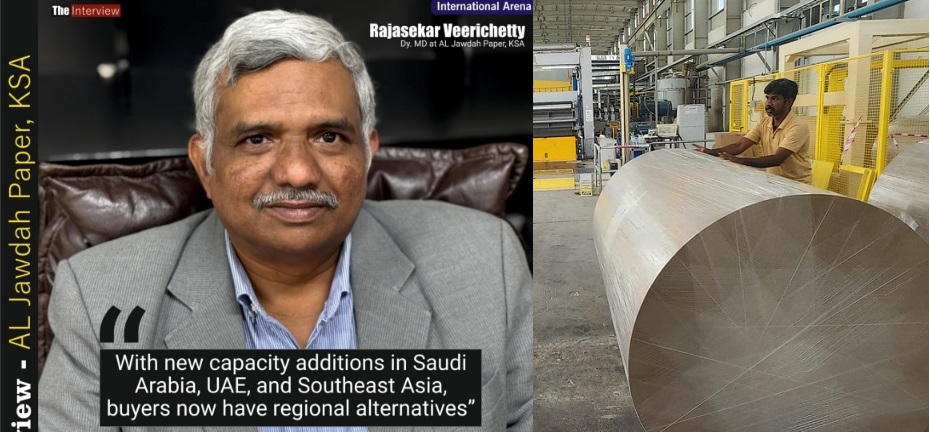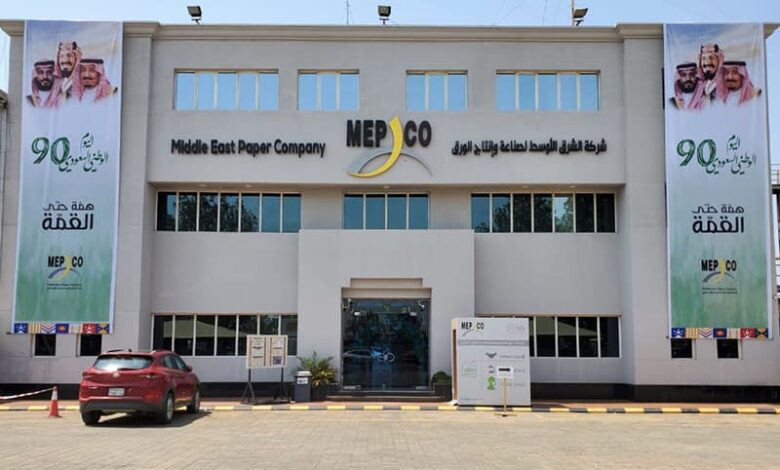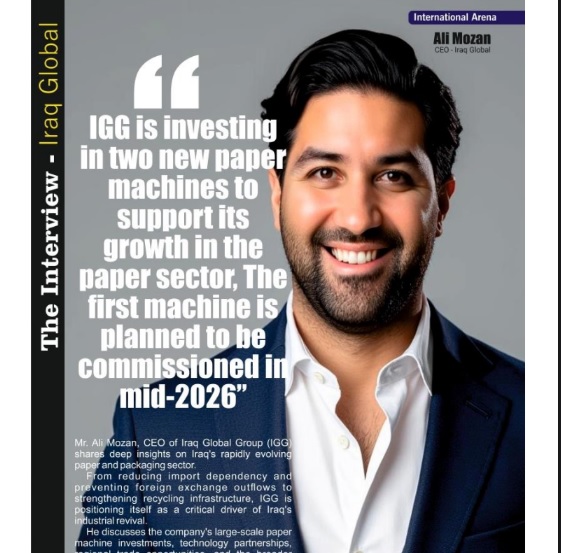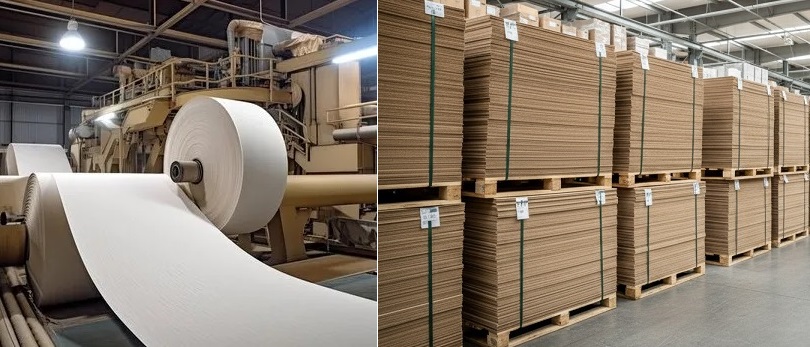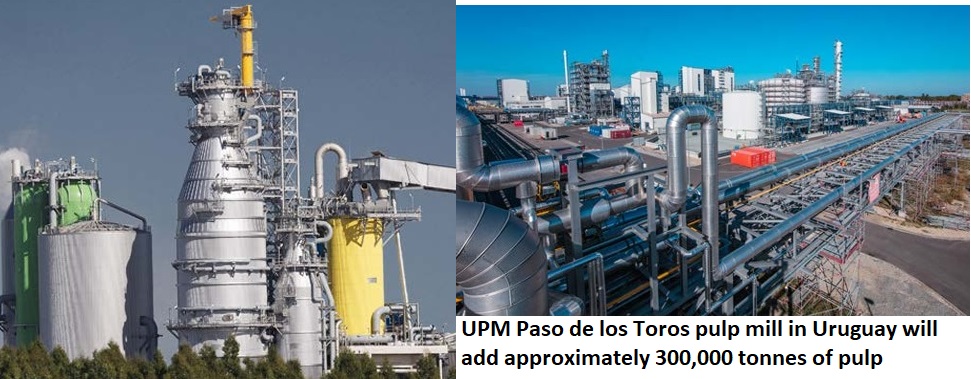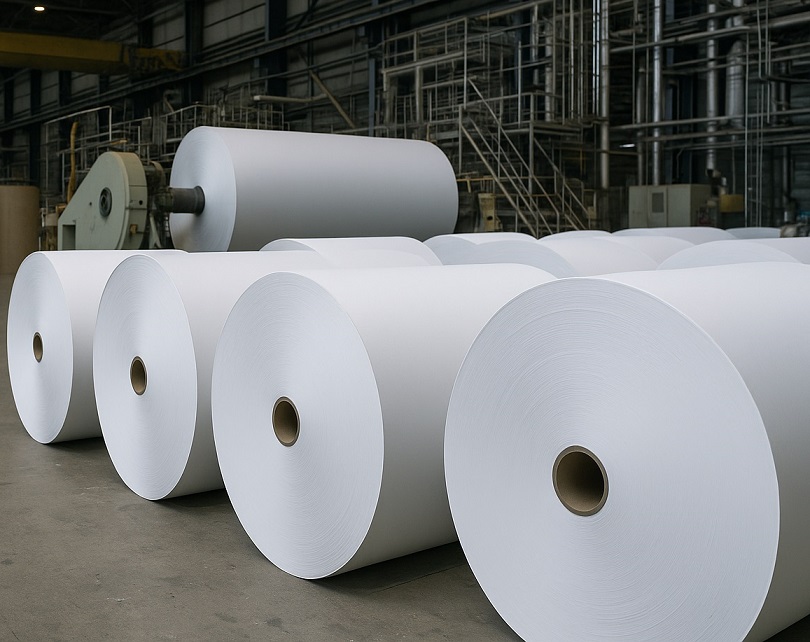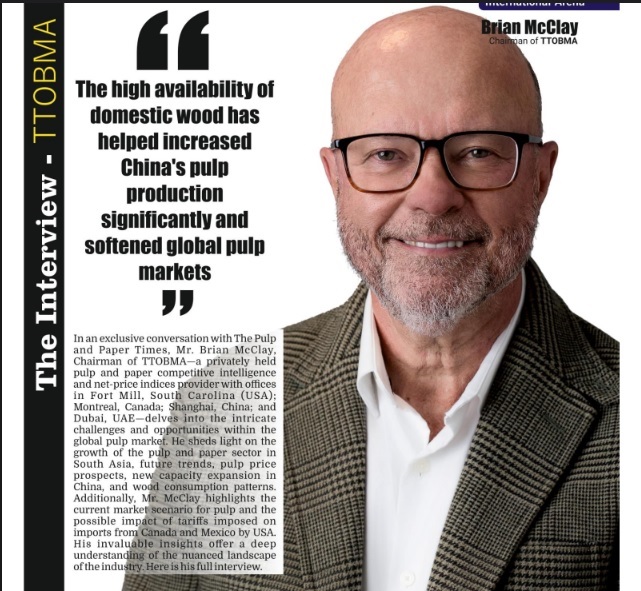Paper mills will have to adapt their facilities to European environmental standards to import raw materials, says BIR-Paper Div. President
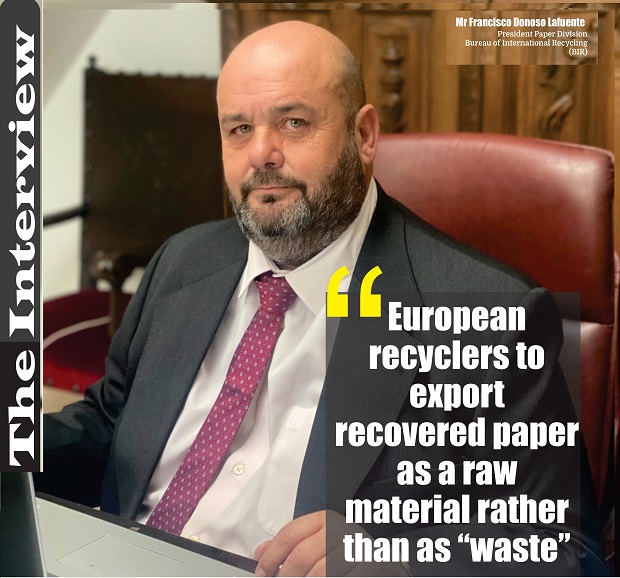
Paper mills will have to adapt their facilities to European environmental standards to import raw materials, says BIR-Paper Div. President
- European recyclers to export recovered paper as a raw material rather than as “waste”
-The market will not get worse and could even improve as early as 2024
In an exclusive interview with The Pulp and Paper Times, Mr. Francisco Donoso Lafuente, president Paper division of - Bureau of International Recycling (BIR) shares his thoughts on several topics, including financial uncertainty in global economy, quick review of the present recovered paper trade, excess capacity issue and prediction for 2024. Here is the whole interview he gave.
Q: Being a president of BIR’s (Bureau of International Recycling) Paper Division, what are its main objectives & issues particularly for the recovered paper?
My main targets are to promote the recovered paper market and trade all over the world. One of our industry’s most important tools is BIR, the world recycling organization, because this enables all players globally to share useful information, most notably at our conventions which are staged twice a year in cities all around the world. At the same time, BIR defends recyclers and their markets from potential legal risks, such as the proposed revision to the Waste Shipment Regulation in Europe.
Q: what is your quick review of the present recovered paper trade market scenario About the demand and supply dynamics of waste paper?
Most countries are suffering a major economic crisis at present, which means less consumption and therefore less demand for our raw materials. Up until several years ago, China used to be one of the leading importers of recovered paper – and also of recycled pulp and finished reels - but its demand is really weak at the moment. On the other hand, the many new facilities being built in the EU and the USA to produce recycled paper will offset, to a certain extent, the lack of demand from other regions.
Q: There is an alarming alert surfacing for the paper mills that the European Community is going to regulate the shipment of waste paper going out of Europe like India and other developing countries. If that regulation implement the prices of the incoming raw material prices will go up. In this condition how the Indian Paper Mills will survive?
BIR, together with the European Recycling Industries’ Confederation, is doing its best to challenge and change such regulation so that its impact is less damaging. In any case, some paper mills will have to adapt their facilities to European environmental standards to enable them to import the raw materials they need at world market prices. Also on the table is an end-of-waste project which will allow European recyclers to export recovered paper as a raw material rather than as “waste”, thereby ensuring that such “waste” regulation does not affect our market that much.
Q: Sometimes small paper mills who don’t have any procurement arm in overseas markets, so rely on the local importer, and are bound to buy material on the quoted price. Is that Contract pricing a hope for sustainable availability of paper raw material at the optimum price?
I think that the optimum price is the real market price, taking into account supply, demand, stocks and consumption levels. It doesn´t matter much if the source is a local importer or a big international supplier. Suppliers abroad have the same need to export as local paper mills have to import, so it will always be a shared effort and a combined result.
Q: Internal demand in Europe remained low, with paper mills grappling with weak order books and high price pressure owing to overcapacity in the sector. How do you think that situation will improve and when?
Internal demand is weak because of economic factors such as inflation and high interest rates. This bad economic situation is the reason behind overcapacity in both Europe and the USA because demand is not strong enough to consume the production from all the new capacities coming on line. Hopefully, the economic backdrop will improve in the near future, and therefore demand and market conditions. However, this is not just a question of the paper market - the issues go much deeper, including wars, geopolitics, etc.
Q: Is there a chance that the recovered paper market will grow in 2024? Do you believe that, because of overcapacity and decreased demand, the situation for paper mills will improve? Perhaps things will remain the same as in 2023?
I really think that the market will not get worse and could even improve as early as 2024, but it will depend on the points mentioned above.
Q: During the Paper Division session of the BIR World Recycling Convention in Abu Dhabi, it was emphasized how crucial carbon credits and artificial intelligence (AI) will be for the paper recycling industry going forward. How can artificial intelligence technology help the recovering paper industry?
I think that AI will be present in all aspects of our personal and professional lives, as has happened with the internet over recent years. Focusing on our processes, it will improve the quality of recovered paper and finished reels to a revolutionary extent. AI combined with robotic science will substantially improve the efficiency of sorting plants. Technology will be able to detect unwanted materials and identify correct types of recovered paper, thus meeting the required standards much more efficiently than the human eye and hand can achieve. It will also be able to determine the best bales to use when preparing pulp in order to achieve the required standard and homogeneous quality levels. But maybe even more important will be the improvement in quality measurement. Technology will change from random to reality - from atomized analysis of small samples taken at random to a realistic general view which would never be possible with the human eye. This technology will probably be significantly cheaper and more rapid than current systems of analysis, so every player - recycler or mill, big or small - will have access to it, and information will be able to be shared between supplier and clienton a real-time basis.
Q: In the paper industry, there has been a lot of talk about ESG and green companies. How does this relate to recycling paper? Will this idea become increasingly significant in the future?
Paper is a primary need all over the world. The best access to paper products means the best quality of life for the public and for businesses. Therefore, paper production facilities are always environmental social governance investments. And if we focus on the first of these terms, namely environmental, then used paper recovery is an essential option in terms of paper producers’ procurement owing to much greater ecological benefits such as reduced CO2 emissions and protection of natural resources such as trees, water and land fill space, among others.
Q: How does BIR see the future of the recovered paper market in next five years?
We think that recovered paper will gain share over virgin fibre because of the factors mentioned above, and paper products will gain market share over other materials for the same reasons. Therefore, the recovered paper market can only improve in terms of demand and volumes. Advances in technology and logistics will support this. The experienced professionals within the world recycling industry, backed by BIR, will certainly help facilitate the development of this positive trend.
Web Title: Paper mills will have to adapt their facilities to European environmental standards to import raw materials, says BIR-Paper Div. President




 Join WhatsApp Group
Join WhatsApp Group Join Telegram Channel
Join Telegram Channel Join YouTube Channel
Join YouTube Channel Join Job Channel (View | Submit Jobs)
Join Job Channel (View | Submit Jobs) Join Buy Sell Channel (Free to Submit)
Join Buy Sell Channel (Free to Submit) Paper News Headlines Channel (Free to read)
Paper News Headlines Channel (Free to read)



